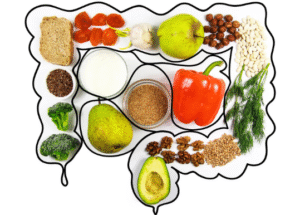Pheochromocytoma and High Blood Pressure
Pheochromocytoma and High Blood Pressure: Understanding the Link
What Is a Pheochromocytoma?
A pheochromocytoma is a rare type of tumor that typically forms in the adrenal glands—small glands located above each kidney. In rarer cases, these tumors can also develop in specialized nerve cells throughout the body. Although most pheochromocytomas are noncancerous, they are medically significant due to their ability to produce high levels of stress-related hormones called catecholamines.
How These Tumors Affect Blood Pressure
Pheochromocytomas secrete large amounts of epinephrine (adrenaline), norepinephrine, and sometimes dopamine. These potent hormones play a central role in the body’s “fight or flight” response and heavily influence cardiovascular function.
Even in Small Quantities, These Hormones Matter
-
Epinephrine, norepinephrine, and dopamine raise heart rate, blood pressure, and blood flow.
-
In people with pheochromocytomas, the excessive release of these hormones leads to extremely high blood pressure, often with dramatic fluctuations throughout the day.
-
The body typically uses only tiny amounts of these chemicals in stressful situations. In contrast, the continuous or excessive release caused by pheochromocytomas can result in dangerous health consequences.
Symptoms of Pheochromocytoma
The classic symptom set—often called the “pheochromocytoma triad”—includes:
-
Severe headaches
-
Heavy sweating (diaphoresis)
-
Rapid heartbeat (tachycardia)
Other symptoms may also appear, including:
-
High blood pressure (often very elevated)
-
Blurred vision
-
Unexplained weight loss
-
Increased thirst and frequent urination
-
Elevated blood sugar levels
⚠️ Note: These symptoms are not unique to pheochromocytomas and may overlap with other conditions, so medical evaluation is crucial.
How Pheochromocytomas Are Diagnosed
Most pheochromocytomas are discovered incidentally during imaging tests like CT scans or MRIs performed for unrelated reasons. When visible, the tumors often appear as small masses near the adrenal glands.
Doctors may suspect a pheochromocytoma if a patient:
-
Has a family history of the tumor or related genetic conditions
-
Presents a specific combination of symptoms
Diagnosis usually involves:
-
Measuring hormone levels (especially catecholamines) in blood and urine over a 24-hour period
-
Imaging studies of the abdomen and chest
-
Stimulation or suppression tests to see how hormone levels respond to certain substances
Treatment for Pheochromocytoma
Surgical Removal Is the Standard of Care
Surgery is the only definitive treatment for pheochromocytoma. However, managing blood pressure before surgery is critical. Because these tumors elevate blood pressure, any additional stress or manipulation during surgery could lead to dangerous spikes.
Preoperative Preparation
Doctors usually prescribe medications to:
-
Lower blood pressure
-
Stabilize heart rate
This pre-surgical regimen helps reduce surgical risks and complications. The operation itself is typically performed by a specialist surgeon, often with additional monitoring and testing before, during, and after the procedure.
💡 Frequently Asked Questions
⭐ Expert Tips
- Include seasonal or trendy variations to keep your meals exciting.
- Highlight prep shortcuts or time-saving techniques for busy cooks.
- Consider dietary restrictions and include substitution suggestions.
✅ Key Takeaways
- These dinner ideas are perfect for impressing guests or enjoying special occasions.
- Choose recipes that match your skill level and available kitchen tools.
- Presentation and taste both contribute to a memorable dining experience.
📣 Join Our Community
Want more inspiration like this? Subscribe to our newsletter for weekly dinner ideas and cooking tips!






